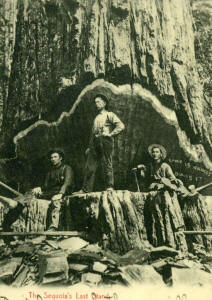Chapter 6 of Cynthia Freeland’s book, But is it art?, is focused mainly around the idea of the meaning and interpretation of art. She also mentions the two main theories of art: the expression theory and the cognitive theory. Cynthia starts off by stating that all art communicates. To understand what it is saying takes knowledge: of its culture, of what the artist was going through, and of what was going on at that moment in time. Depending on what is taken from the artwork affects the interpretation that is created by the viewer. Cynthia brings in a painting of Francis Bacon, Triptych of 1973, to interpret. She informs the reader of what a few critics’ thought and then makes a strong statement that Bacon is the perfect example for both theories. From the expression theory he shows “emotions, so is like laughing or screaming.” From the cognitive theory he shows “complex thoughts, so it is similar to a language.” Cynthia then goes on to give more examples and more literal definitions of the two theories. The expression theory is based off of art communicating with the viewer mainly in the form of feelings or emotions. One of the greatest examples to describe this theory is abstract expressionism. Another one is music. The one main problem with this theory is that it is too narrow, it says that an artist can only create artworks that emit emotions. The cognitive theory is based off of art communicating with the viewer mainly in the form of enabling people to deal with reality, gives them knowledge. It is a place where people can come to terms with issues in their life’s and figure out a way to move on and grow.
I enjoyed reading this passage from her book. It made me realize that art can have more than one meaning behind it. An artist may begin a painting to express an idea, but it can evolve and emit a feeling in it as well. Before I thought that a painting had to be one or the other. It either had to only focus on a feeling or an idea. I can see that my “dislike” to Jackson Pollock’s work may be cause from my misunderstanding of him. A little like Bacon’s Triptych of 1973. When first hearing of the artwork I thought that he was dark and depressing. That he was only looking at the morbid part of life and nothing else. Once Cynthia started to bring in other critics’ ideas and other meanings, I learned that to truly understand an artwork you have to look at their key beliefs and what their past works came from. In addition, the main thing I learned was to take into account what the artist was going through. I would have never guessed that Bacon might be making the artwork to mourn the loss of his love. I forgot that real life experiences take form in an artwork. I also enjoyed the thought that Suzanne Langer made: the idea that art maybe another way of gaining knowledge without speaking. It made me realize that there are more ways of speaking other than actually saying words. When I usually look at an artwork I look at it quickly and move on. After reading Langer’s idea, I will now make an effort to truly look at an artwork and try to understand what the artist is trying to say. The cognitive theory was very insightful. Looking back, I now know that artworks do teach me new things. They teach me to appreciate true talent, that a smile is worth a thousand words (aka Mona Lisa’s smile), and that sometimes less is more in a painting.
Chapter 7 of Cynthia Freeland’s book, But is it art?, is about the reproductions and the originals of works of art. She quotes Walter Benjamin when he talks about how the originals had an ‘aura’ about it and by having multiple reproductions of it, the copies don’t have the same ‘aura’ and therefore it loses some of the magic to it. Benjamin goes on to say that it is good to have the ‘aura’ gone because it makes the piece more personal and less untouchable. It makes the masses feel as if they are able to see it at a normal level and not on the pedestal that we put famous artworks on. He credits it to new media and he focused on cinema. Another person mentioned that agrees with Benjamin is Marshall McLuhan. McLuhan focused mainly on new ways of communicating with others, such as the television and Internet, and its impact on people, their culture. He said that television was more social and the Internet was more individual. In contrast, Baudrillard said that the new media created hyperrealism. Baudrillard stated that, “an audience is not simply absent-minded, but absent: lost in its own images.” That it made things beyond real. The examples given were getting married was only for the videos and photographs and Disneyland; that both of those things make everything seem perfect, picture perfect. They put you in a state of mind that allows you to think that nothing can go wrong and that everything is just right. Cynthia summed up this chapter by talking about how all art in the end will end up going from galleries and museums to the Internet, television, and other mainstream places.
The ‘aura’ of a work of art is what we described in class as the indescribable part that makes us like it. It is the part that draws us in and makes us want to look closer and makes us feel connected to the piece. In addition by not having the ‘aura’ it makes the piece less untouchable and more personal to the average viewer. In addition, during class we were talking about the negative impact that comes around as a result of having an artwork be given to the masses. It results in there being more copies of the artwork. When there are more copies out there it makes the original less noteworthy because you have seen it so many times before. You develop this expectation of the artwork that is not delivered when you see the original in person. There is a disappointment from not having it live up to what you believe it should be. I know this from experience. When I saw the Mona Lisa in person, I expected to be huge, breath taking, and awe inspiring, but it was tiny and the room was huge and there were so many people moving around that it made the picture seem even smaller due to all the masses pressing down on it. I knew that it should invoke a feeling on me, but all it really did was make me wonder when I could leave the suffocating room and why it was so important to art’s history. The expectations of the artworks are in a sense created by hyperrealism. I had seen the Mona Lisa so much that I expected it to perfect and it was not. I have even experienced being blown away and completely taken off guard; it was when I visited the Statue of David. Every time I had seen a picture of it, it seemed small and there was a leaf on him. So, when I did see it in person I was frozen in my spot. The statue was huge. It was about 20 ft tall and just overpowered you from the sheer size of it. It was monumental and taller than I ever expected it to be. There was also the fact that there was no leaf. That just made me blush. I believe that if you see a copy of an artwork too many times, then the original is no longer interesting and if you hardly see the copies, then the original will take your breath away.
Three Questions:
Is there another way that art communicates with us other than the two theories she mentioned?
Do people, who come from different cultures, share the same appreciation for a single piece of art?
Seeing as abstract expressionism is the perfect example for the expression theory, what would be the perfect example for the cognitive theory?
Is it better to see a copy and have so many expectations put on the original or to never see the copy and hope to see the original one day and have it be breath taking?

